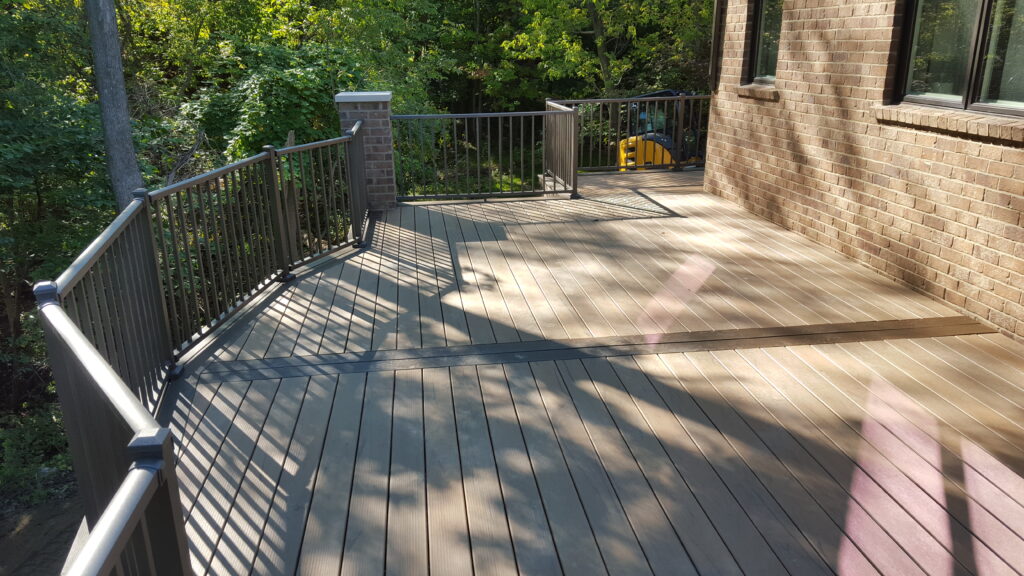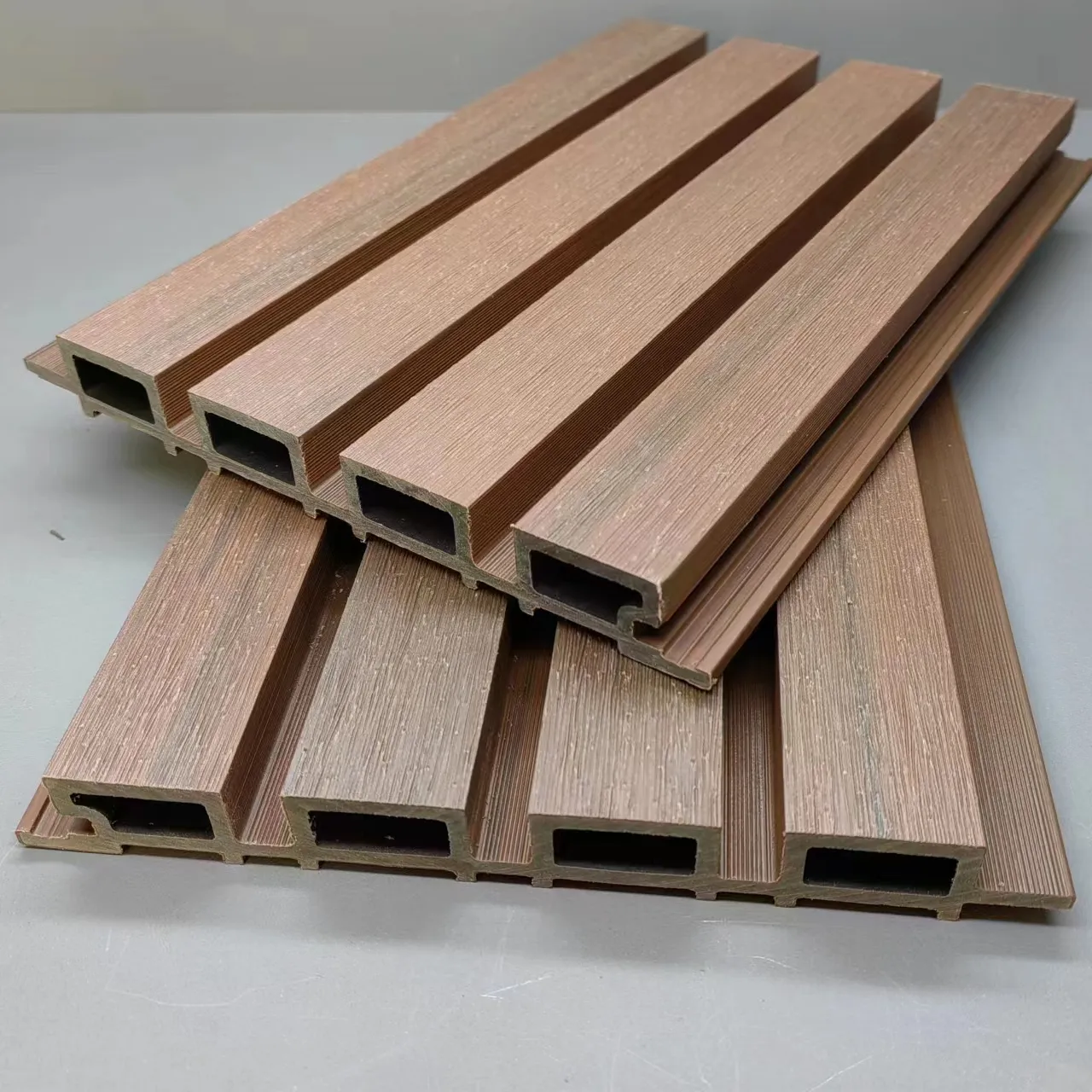
What Is Photochromic Wood-Plastic Composites?
April 23, 2022
WPC Terrassendielen massiv antik gebürstet hellgrau – Der ideale Bodenbelag für Ihre Terrasse
April 26, 2022In a quiet suburban neighborhood, two houses stand side by side. Clad in weathered cedar planks, one bears the scars of decades—faded hues, splintered edges, and the faint shadow of moss creeping along its base. The other, sheathed in sleek, wood-grained panels that glimmer faintly in the afternoon sun, looks as pristine as the day it was installed. This juxtaposition isn’t just a tale of old versus new; it’s a quiet revolution in how we think about the skins of our buildings.
For years, architects and homeowners have wrestled with a dilemma: How do we balance beauty, durability, and environmental responsibility in exterior cladding? Enter Wood-Plastic Composite (WPC), a material that’s quietly upending traditions while paying homage to them. But is it truly the future, or just another flash in the pan? Let’s peel back the layers.
The Anatomy of Innovation: What Makes WPC Tick
WPC isn’t just “plastic wood”—a carefully orchestrated marriage of nature and technology. Imagine taking the sawdust from a lumberyard floor, and the discarded plastic bottles from a recycling plant, blending them into something greater than the sum of their parts. That’s WPC. Typically composed of 60-70% reclaimed wood fibers and 30-40% recycled thermoplastics (like polyethylene or PVC), it’s a material born from industrial leftovers, yet engineered to outperform its ancestors.
But here’s where the magic happens: Additives like UV inhibitors, fungal resistance agents, and color stabilizers are kneaded into the mix. The result? A chameleon-like material that mimics the warmth of teak, the ruggedness of stone, or the crisp lines of modern metal—all while laughing in the face of termites, rot, and Pacific Northwest-level rainfall.
Traditional cladding, by contrast, is a study in extremes. Natural wood, with its organic grain and timeless appeal, demands constant vigilance against the elements. Brick and stone, while stalwart, carry the carbon footprint of quarrying and transportation. Even PVC, the lightweight imposter, cracks under UV rays like a cheap plastic lawn chair.
The Battlefield: Durability in Real-World Conditions
Let’s talk about survival. In the coastal town of Galveston, Texas, salt-laden air devours untreated wood within years. Yet a beachfront café clad in WPC has stood unblemished for a decade, its surface resisting corrosion better than stainless steel. How? Unlike wood, WPC doesn’t absorb moisture—a trait that also makes it impervious to the freeze-thaw cycles that crack concrete in Chicago winters.
Traditional materials fight their own wars. Cedar, when meticulously maintained, can last 20-30 years. But “meticulous” is the operative word. Forget to reseal it once, and you’re hosting a fungal rave. Brick, while durable, slowly surrenders to efflorescence—those ghostly white salt deposits that haunt masonry. And vinyl? One hailstorm in Denver can turn it into a polka-dotted mess.
The Hidden Cost of “Low Maintenance”
Every homeowner knows the drill: Sand, stain, repeat. Traditional wood cladding isn’t just a material—it’s a part-time job. A 2022 study by Building Materials Journal found that the lifetime maintenance cost of a cedar-clad home averages $15,000 over 25 years. Now compare that to WPC: A hose-down twice a year, and you’re done. No sanding, no sealing, no frantic Google searches for “how to remove lichen.”
But there’s a catch. That initial price tag. WPC costs 20-30% more upfront than cedar or PVC. For budget-conscious builders, that’s a hard pill to swallow. Yet when the University of Michigan’s School of Architecture crunched the numbers, they found WPC pays for itself in 12-15 years through saved maintenance and replacement costs. It’s the Tesla of cladding—expensive today, smarter tomorrow.
Eco-Warrior or Greenwasher? The Sustainability Debate
Here’s where WPC’s story gets nuanced. On one hand, it’s a poster child for the circular economy. By devouring industrial waste (think: 8 million tons of wood scraps annually in the U.S. alone), it keeps landfills emptier and chainsaws quieter. A single ton of WPC saves approximately 18 trees from being felled, according to the Green Building Council.
Yet critics pounce on its plastic content. “You’re just swapping deforestation for microplastics!” they argue. Fair point—but modern WPC formulas are increasingly using bio-based polymers derived from sugarcane or cornstarch. Companies like Trex now offer planks with 95% recycled content, including everything from grocery bags to discarded fishing nets.
Compare this to brick production, which guzzles 4 kWh of energy per kilogram (enough to power your TV for 40 hours) and spews 0.2 kg of CO2 for every brick made. Or PVC, whose manufacturing releases dioxins—a carcinogen so nasty it’s banned under the Stockholm Convention.
Aesthetic Alchemy: When “Fake” Becomes Fabulous
Architects used to sneer at composite materials. “Cheap imitation,” they’d mutter. But walk into a luxury boutique in Milan’s Via Montenapoleone, and you’ll find WPC masquerading as centuries-old oak. Laser etching now replicates wood grain so precisely that even carpenters do double-takes.
The irony? WPC’s consistency is its superpower. No more rejecting 30% of cedar planks because of knots. No more color-matching nightmares as stone veneers vary between shipments. For a high-rise developer in Dubai, where every minute counts, WPC’s uniformity shaves weeks off construction timelines.
Yet traditionalists still crave authenticity. There’s no algorithm for the way sunlight filters through hand-laid limestone, or how cedar develops a silvery patina over decades. As noted architect Tom Kundig once said: “A material’s imperfections are its diary.” WPC, for all its precision, is still learning to write that diary.
Installation: The Silent Game-Changer
Picture this: A crew of two, armed with nothing but a circular saw and a box of WPC planks, cladding a 2,000 sq.ft. home in three days. No specialty tools. No toxic sealants. The tongue-and-groove system clicks together like LEGO, while hidden fasteners eliminate the “buttoned-up” look of screwed-on boards.
Now contrast that with brickwork—a ballet of mortar, trowels, and masons who charge $75/hour. Or the precision required to hand-stain shou sugi ban charred wood without turning it into a Rorschach test. For DIYers and contractors alike, WPC is democratizing cladding in ways unthinkable a generation ago.
The Verdict: Evolution, Not Replacement
In the end, WPC isn’t here to erase tradition—it’s expanding the palette. For a mountain cabin where the smell of pine is non-negotiable? Cedar still reigns. For a hurricane-prone beach house? WPC’s resilience is insurance.
But perhaps the true victory lies in shifting expectations. As climate change tightens its grip, materials must multitask: beautiful yet tough, sustainable yet affordable. WPC, with its chameleon-like adaptability, hints at a future where buildings aren’t just shelters, but partners in planetary stewardship.
So the next time you pass a building, look closer. That “wood” might be whispering secrets of recycled soda bottles. Those “stone” panels might be hiding a childhood’s worth of homework assignments, pulped and reborn. In this quiet revolution, every wall tells a story—and WPC is writing a new chapter.

